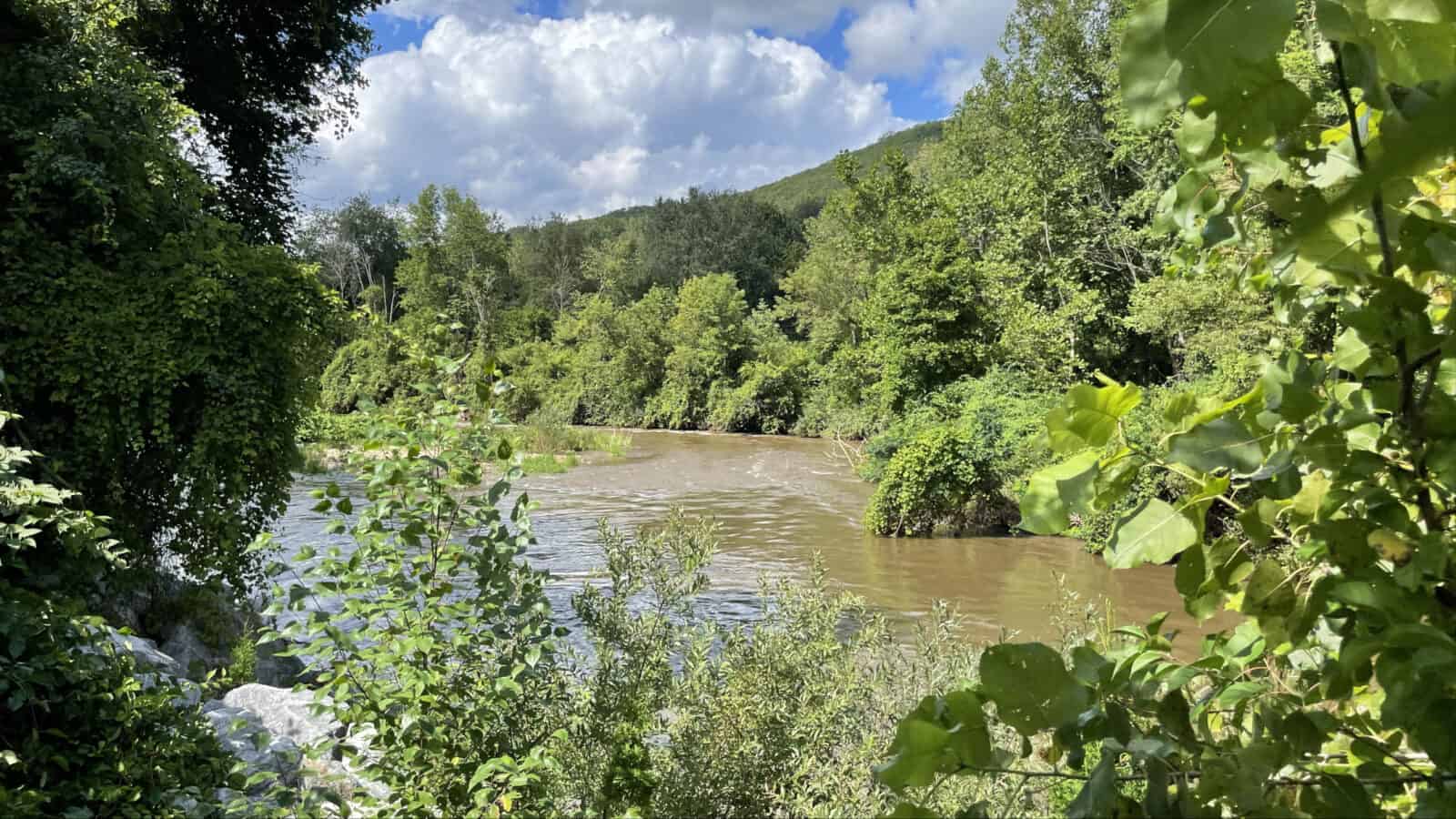‘I watch the Hoosic River run, and it’s all the running I need.’
Auyon Mukharji, singer songwriter and guitarist in the band Darlingside, stands on the bank of the Hoosic in the sun. On an afternoon in high summer, the river is running high, churned up after heavy rain.
In a pensive tenor, over rippling chords and finger strumming classical guitar, his lyrics look for calm in a world that feels fast-moving and hard-edged — the river moves in a different kind of time.
‘What people know grow to know, they grow to love and protect.’ — Arianna Collins
He’s playing to the water near Cole Field, near the northern edge of the Williams College campus. Mukharji is a Williams alum, and his string rock quartet, with its ties in Boston and Northampton, started here during a college summer more than 15 years ago.
Since then Darlingside have won recognition worldwide for their harmony and world-building, and this summer Mukharji has joined a wide corps of local musicians, from many ages and backgrounds, in celebration of the river.
In an evening of poems and original songs, they will gather in a summer concert in the pollinator garden at the Spruces on August 24, says Arianna Alexsandra Collins, executive director of the Hoosic River Watershed Association. She wants to bring people out to relax along the water.
“What people know grow to know, they grow to love and protect,” she said.
Robin Sears, executive director at Williamstown Rural Lands, agrees, and she is also looking to the arts in new collaborations. This month, WRL is collaborating with Tupelo Press to create a journal of poetry, essays and more celebrating the Hoosic River valleys and the Northern Berkshires.
“We are thinking about the environments and landscapes, the ecological splendor and livelihoods (the watershed sustains),” she said.
She and Collins talked at WRL on a summer day outside the old carriage barn. Cardinal flower were opening bright red along the edge of the pond, and a beaver has returned this summer, Sears said. On Sheep Hill, the meadow goldenrod and joe-pye weed, yarrow and queen anne’s lace.
The idea for the journal began there, she said. Jeffrey Levine, the editor of Tupelo Press, comes walking on Sheep Hill almost every day, and sometimes she will walk with him. Climbing the meadow path, they got talking about celebrating the landscape. As a scientist, she told him, she wanted to explore from the perspective of the humanities.
“We’re trying to keep up with Arianna,” she said, laughing.
Hoosic River Watershed Association and Williamstown Rural Lands are both in their 37th year and both dedicated to caring for the river and the communities, plants and animals who live here.
Sears wants to reach different people, she said. Some may be drawn to the river because they are about clean water, or fish, and some through walking in the woods, and some through storytelling.
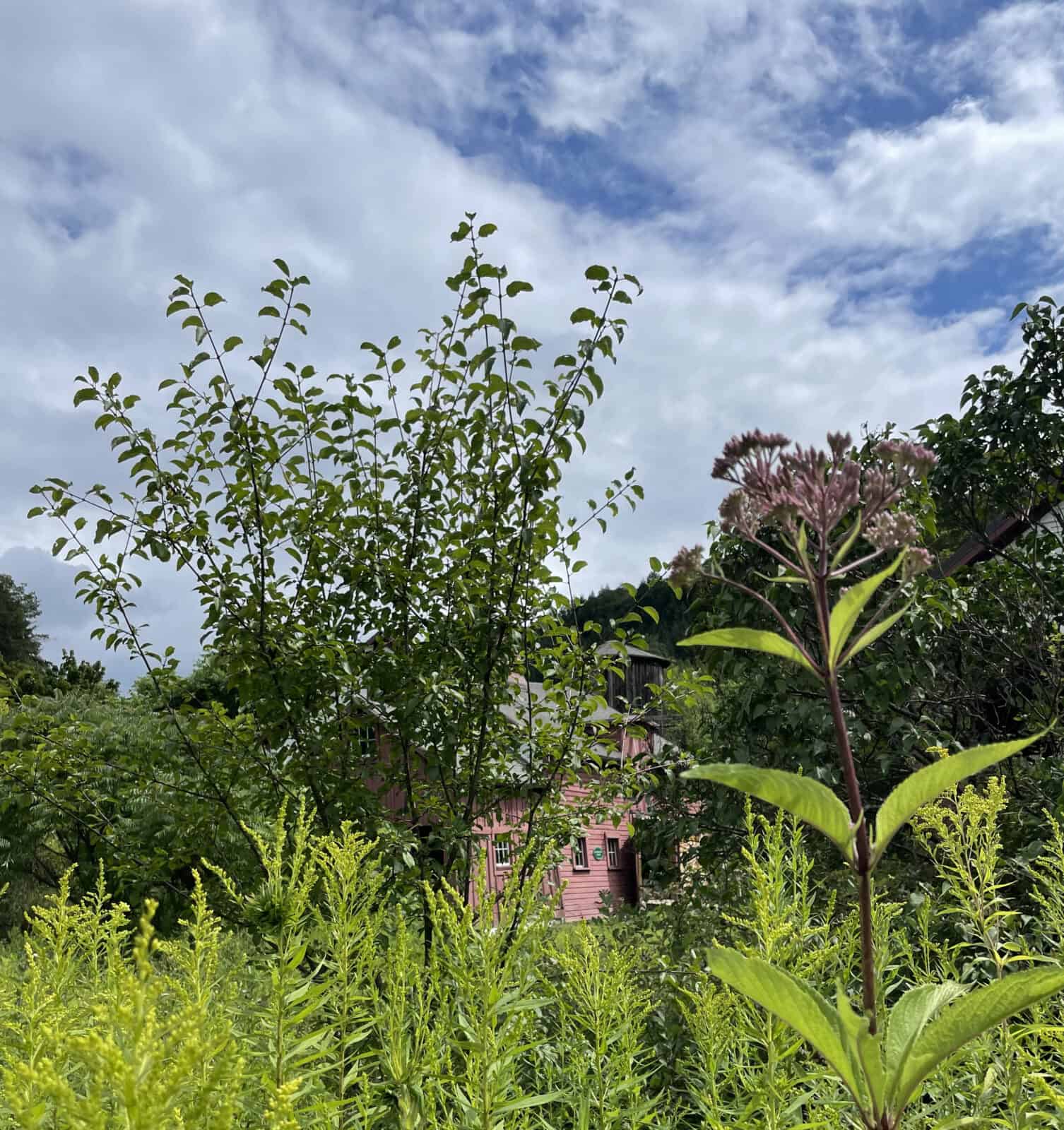
Joe pye weed blooms in the meadow on Sheep Hill with the red barn at Willimstown Rural Lands in the background.
Northern Berkshire lights
Williamstown Rural Lands is partnering with Tupelo Press to create a new journal, an art and literature review — a tromp through the Northern Berkshires in stories and art — they are gathering submissons by August 31.
‘… white-tailed deer in the river,
a mother and child, and their crossing is a labor,
uneven river stones, water neck-deep for the fawn.
I carry my baby in the front pack from which
he can touch the beetle-holed bark of a maple.’
In HooRWA’s Music and Poetry along the River project, Berkshire poet Lizzy Beck reads her work near the meeting of the paths along the Hoosic and Green rivers.
Collins came up with the project last fall. Her friend Rebecca Hartka, a cellist, took her on a blessings of water tour — she played for the the Connecticut River, tributaries, small streams and springs. She was traveling back roads and trails in Hampshire, Franklin and Hampden counties.
Collins wanted to bring people out into the watershed here. As a poet living in Ashfield, she said, she wanted to open HooRWA to writing and performance. The association has curated an annual art show for 30 years, bringing together artists working in sculpture, paint, found objects and natural elements.
She has invited in poets, musicians, interpretive artists, reaching out through connections in Berkshires and the Straw Dog Writers Guild in Northampton. This summer, she and her summer intern set up solo performances along the river and filmed them.
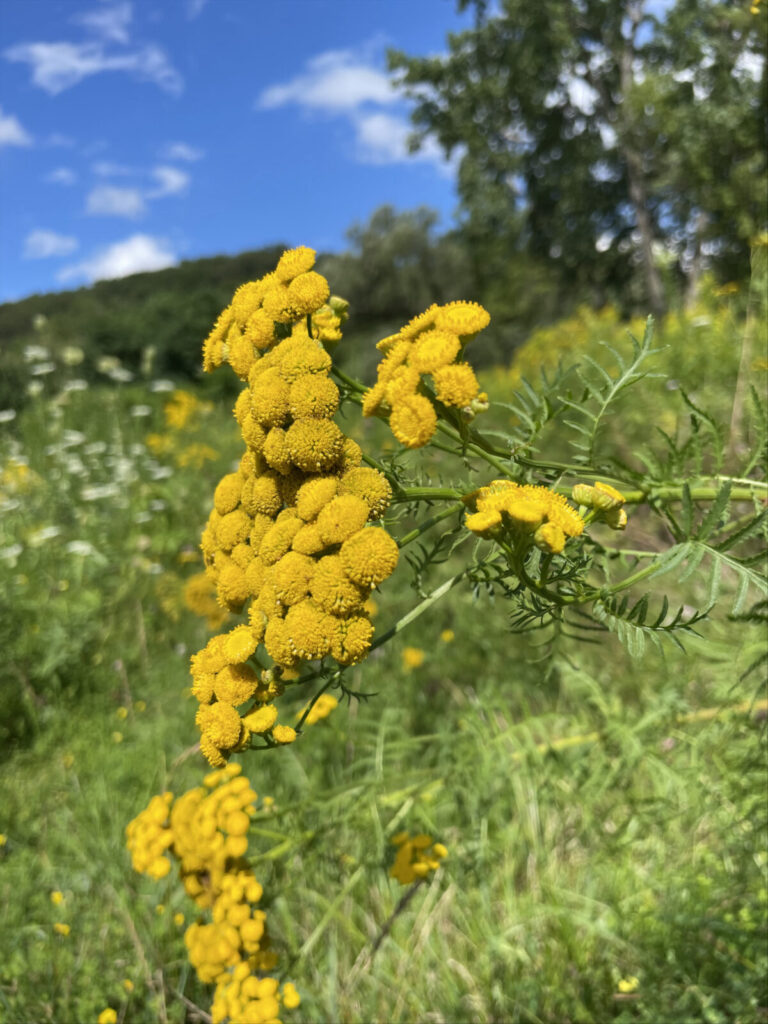
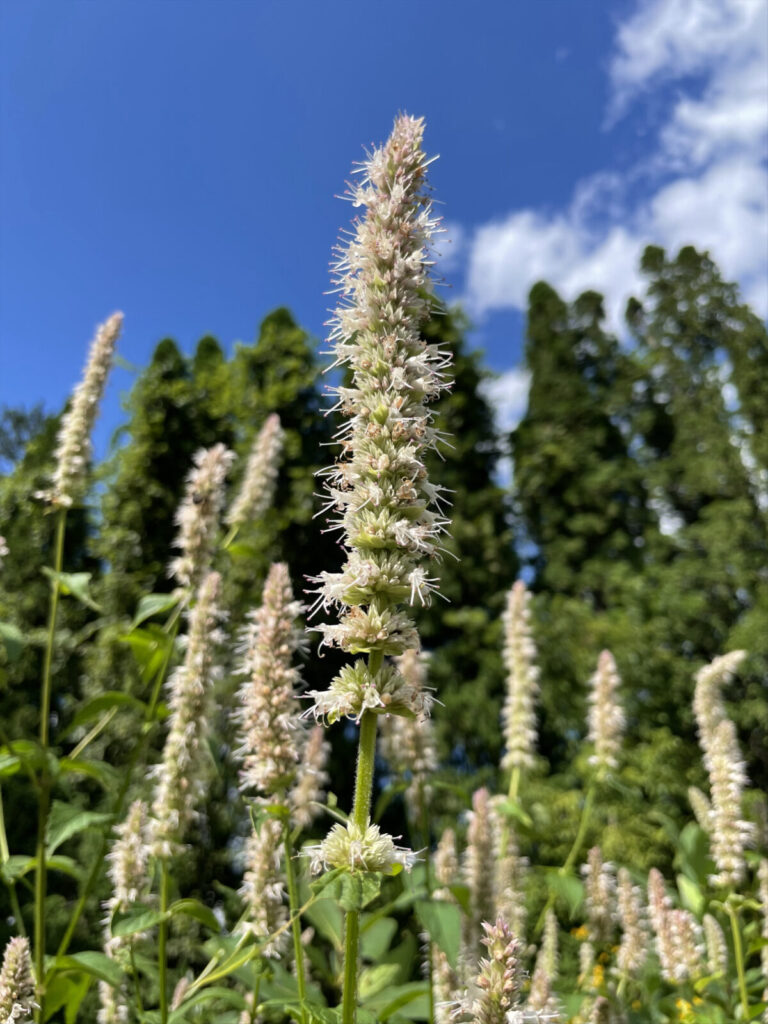
‘I carry my baby in the front pack, from which he can touch the beetle-holed bark of a maple.’ …’ — Lizzy Beck
Wintergreen trio, Alice and Larry Spatz and Jared Polens, lean back like neighbors on a porch and swing into the Hoosic jig in a major key on hammered dulcimer and standing bass and guitar.
Nationally known folk singer songwriter Bernice Lewis sings for the people of the Spruces, who lived near her for close on 30 years, until their neighborhood flooded in 2011, and people left, she says, reluctantly, sadly, with a sense of the community they were losing.
‘All my friends neighbors are scattering like silt
… you can’t push the river when the water’s at your door.’
Lewis and her fellow poets and musicians are tapping human experiences, pain and peace, and encounters with natural forces, the changes going on in the natural world, the beauty living here.
She recognizes the Mohican families and communities who lived here for hundreds of years and live here today — and the ways they knew and lived with the land.
‘When the river flooded, when the rains came down,
they lived by premonition and they moved to higher ground.’
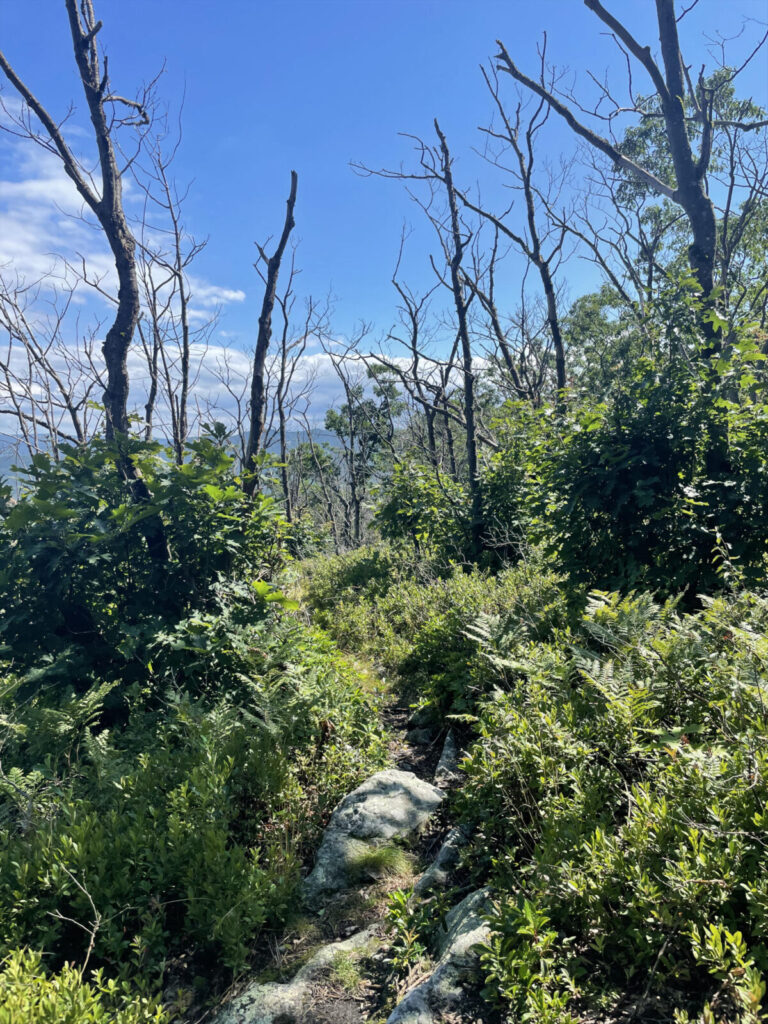

The journal too, Sears hopes writers will explore the natural landscape and the experience of living here. They may be walking with a parent or a child or a partner, or kayaking through bladderwort and pickerel weed, or wading in the shallows. They may be picking wild blueberries on the Appalachian trail or collecting a farm CSA share in a timber framed hay barn … or shucking sweet corn on a summer night. They may look to today, or the past and future.
For the nature journal, WRL and Tupelo have gathered a group to jury the writing, and they too are building connections. Bonney Hartley, historic preservation officer for the Stockbridge Munsee Nation, will take part as a local who cares about the land, Sears said.
She has also been in conversation wtih Sarah Houghteling, special projects coordinator in the research and academic program at the Clark Art Institute — and also writer of the novel Pictures at an Exhibition, with writing in The New York Times, Narrative Magazine and the San Francisco Chronicle.
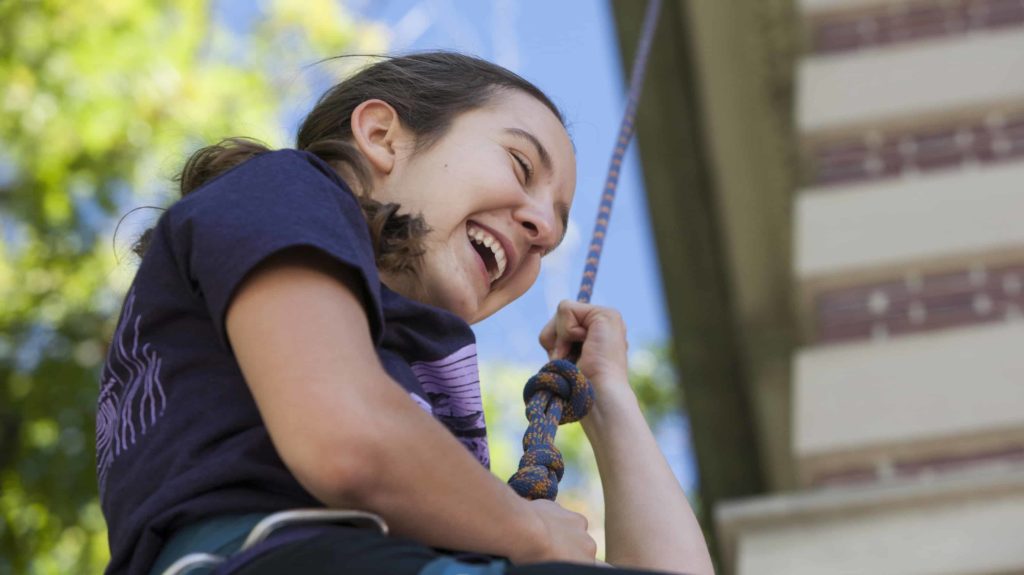
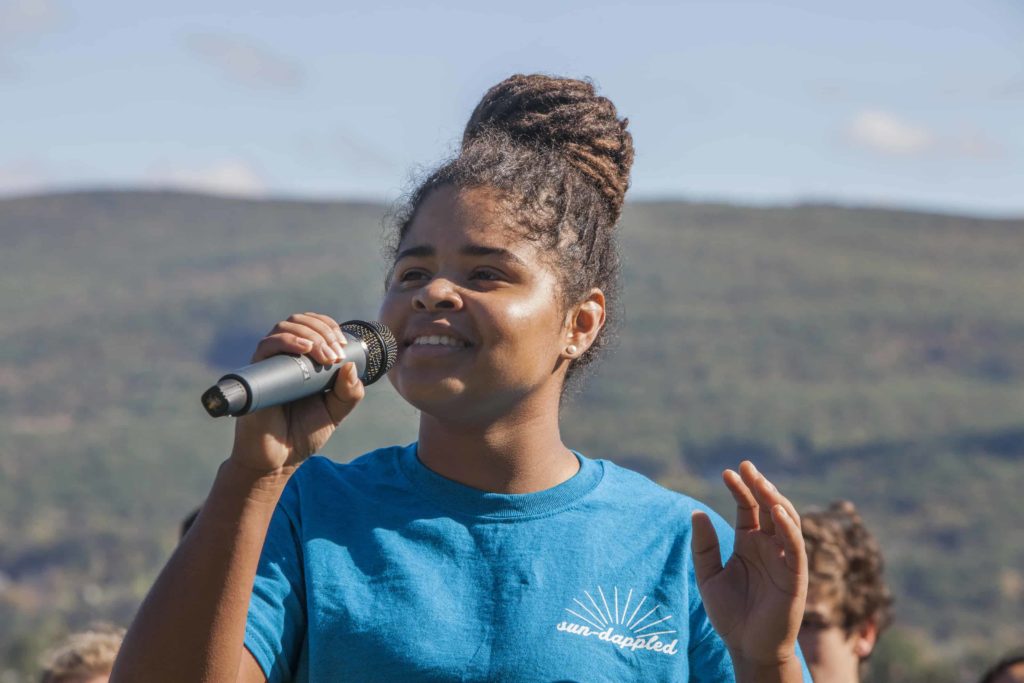
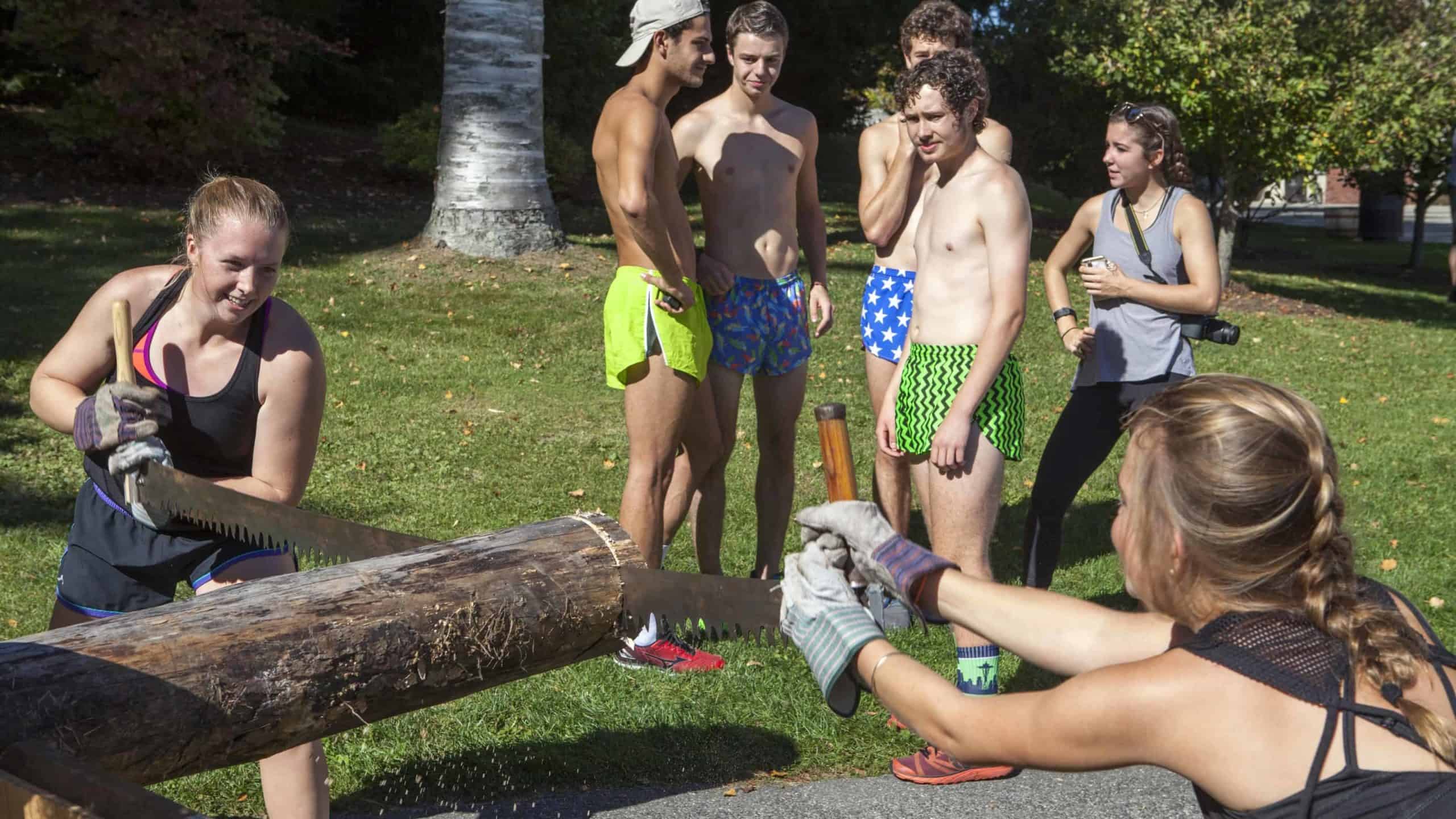
Students try out a crosscut saw on Mountain Day at Williams College. Students celebrate a fall day with music and outdoor activities.
Some part of the journal is about experiencing, Sears said — getting to know where you live and who you live near. She wants people to come outside, rest their eyes and feel the beauty in the river and the Eastern cottonwoods, in the ridges and the meadows.
And some is about knowing — she wants people to think the landscape, their place in it and connection to it … to deepen their relationships with the land by enjoying it in a creative way. She means knowing the woods familiarly, maybe knowing the names of trees, the clear points of a red oak leaf, the mitten of a sassafras.
And she means knowing nature from the heart, she said, having a sense of closeness or familiarity. She recalled the day after she started at WRL, they held their annual meeting, and she remembers how strongly moved she felt, taking on this work to steward the land.

Cairns of quartzite cobbles mark an open stretch on the Pine Cobble Trail just below where it joins the Appalachian Trail.
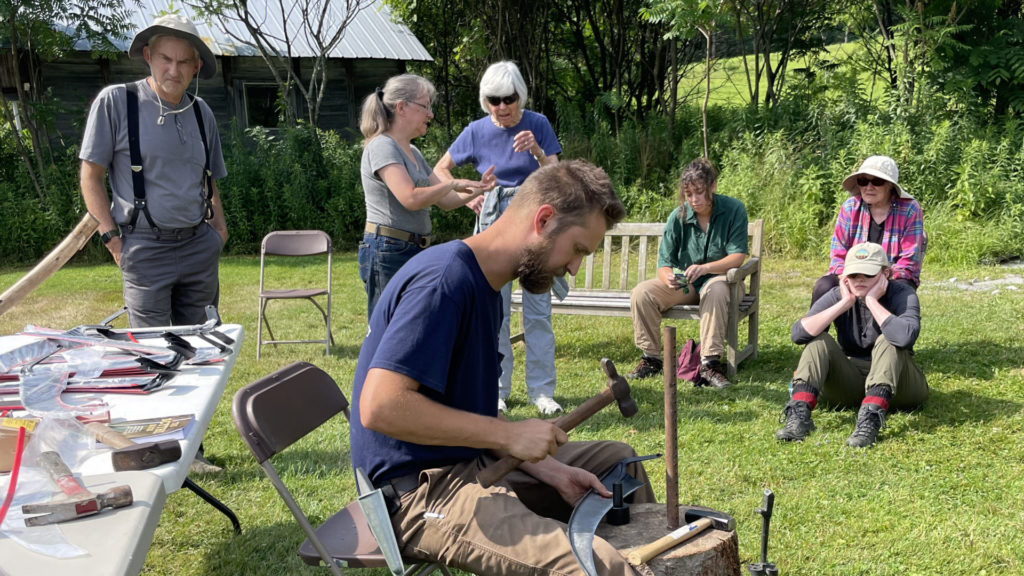

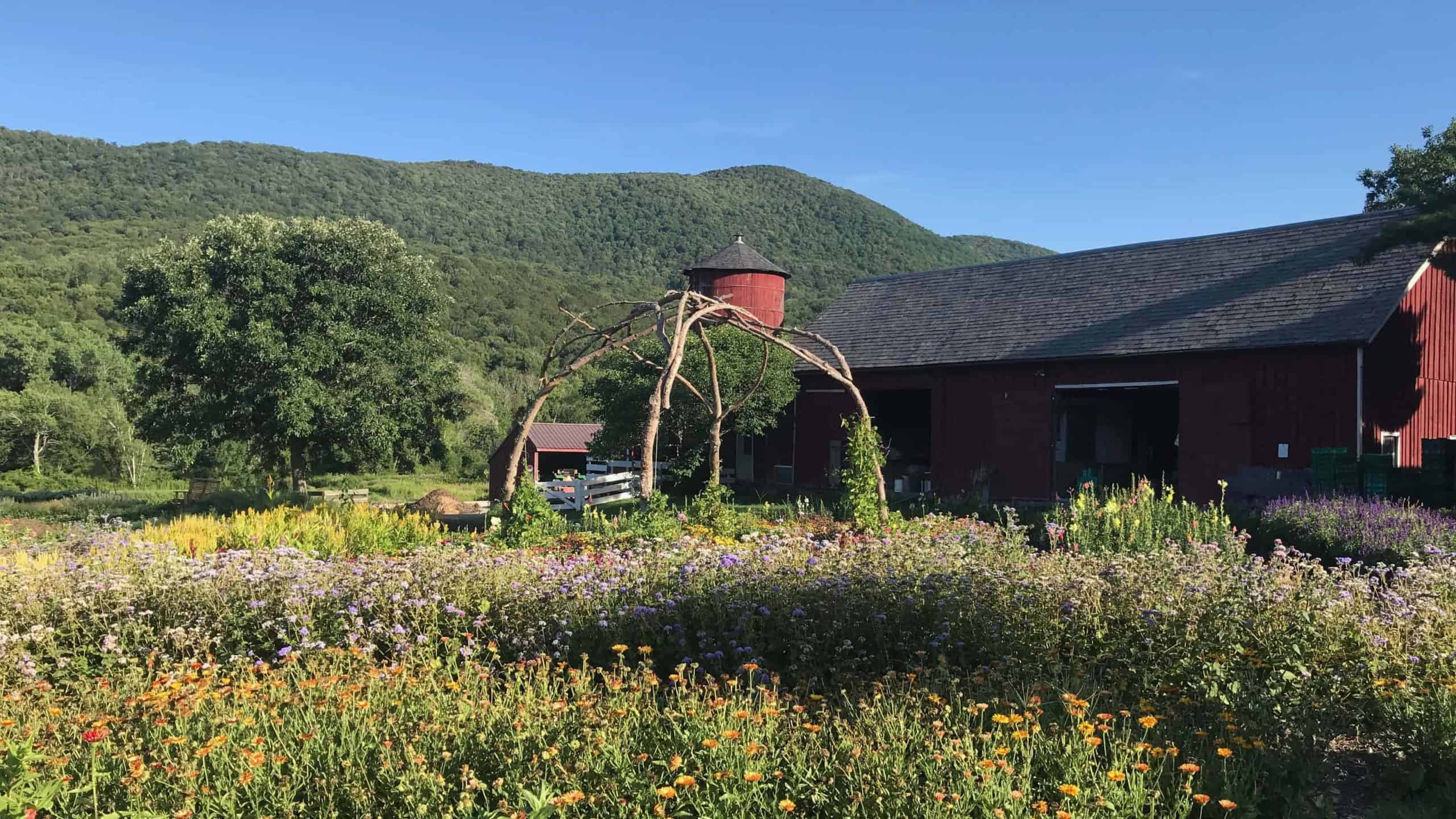
The flower gardens bloom in rich reds and purple and gold at Caretaker Farm in Williamstown.
“It’s an embodied knowledge,” Collins said. “I can know that’s goldenrod, but smelling the flower and tasting it is different … goldenrod is a healer against allergies to ragweed. People tell me they’re allergic to goldenrod, and you may be, but ragweed is much more likely, because goldenrod is pollinated by pollinators — ragweed is wind-pollinated.”
Goldenrod is one of the wild edibles she teaches in her monthly walks with Wild Soul River, and this summer at the Clark Art Institute. She likes the flowers in salads, she said.
“I very much believe,” Sears said, “the more we spend time outside in nature, exposed to the elements, resting our eyes on beauty, soaking up the good feeling farms give us — the sense of security in local food growing here, fresh greens, new potatoes — the happier we are, and the healthier we are in mind and body.”
“And the more connected we are,” Collins agreed. “That’s why we lead the wild edibles workshops, to give access points to everyone, so people can feel how we belong to the natural world — we’re here, and we’re part of it.”
She wants to go up to the Walloomsac to finish a poem she began a year and a half ago. She sat near the place where the Walloomsac heads toward the confluence of the Hoosic, and she listened to the water running, laughing, exuberant over the rocks. She remembers a few words in the opening.
‘If you could fall in love with a river …’
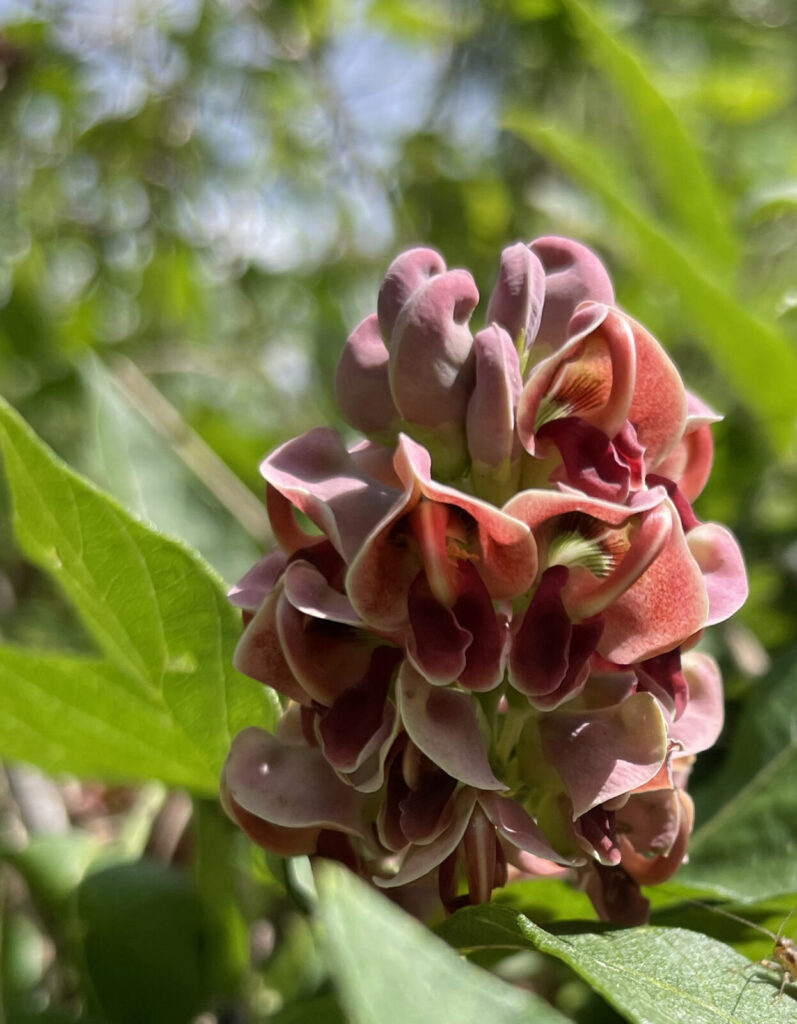

The journal is open to essays, poetry and artwork, Sears said, and maybe to fiction. For some readers, reality is already too much, and invention presses beyond. This first book will act as a pilot, she said, and she hopes to keep the project going. She and Collins considered journaling workshops through the year, and open mics.
In August they have already held a write-in on Stone Hill with the Clark Art Institute, inviting people to walk up Stone Hill and explore the Humane Ecologies exhibit, as the artists weave nature and creation together.
Their work moved Sears too, she said, with a deep sense of sadness and celebration. She thought of Thai artist Korakrit Arunanondchai’s film Songs for Dying (2021), dedicated to his grandfather, who raised him. In one recent moment, when the king of Thailand dies, everyone at the ceremony is given earth where he has walked.
“It made me think about my footsteps,” she said. “Do I leave anything of my soul there, in the particles of soil that roll down to the river?”

The Hoosic River runs along a natural bank of grass and sand near the neighborhood of houses along Harding Avenue in North Adams.

MCLA students study local waterways in North Adams.
Taking care of the river
MCLA students study the river in North Adams, and local volunters with Mountain Warrior Conservation, Wild Soul River, Trout Unlimited and the Hoosid River Watershed Association clean up trash along the riverbank.
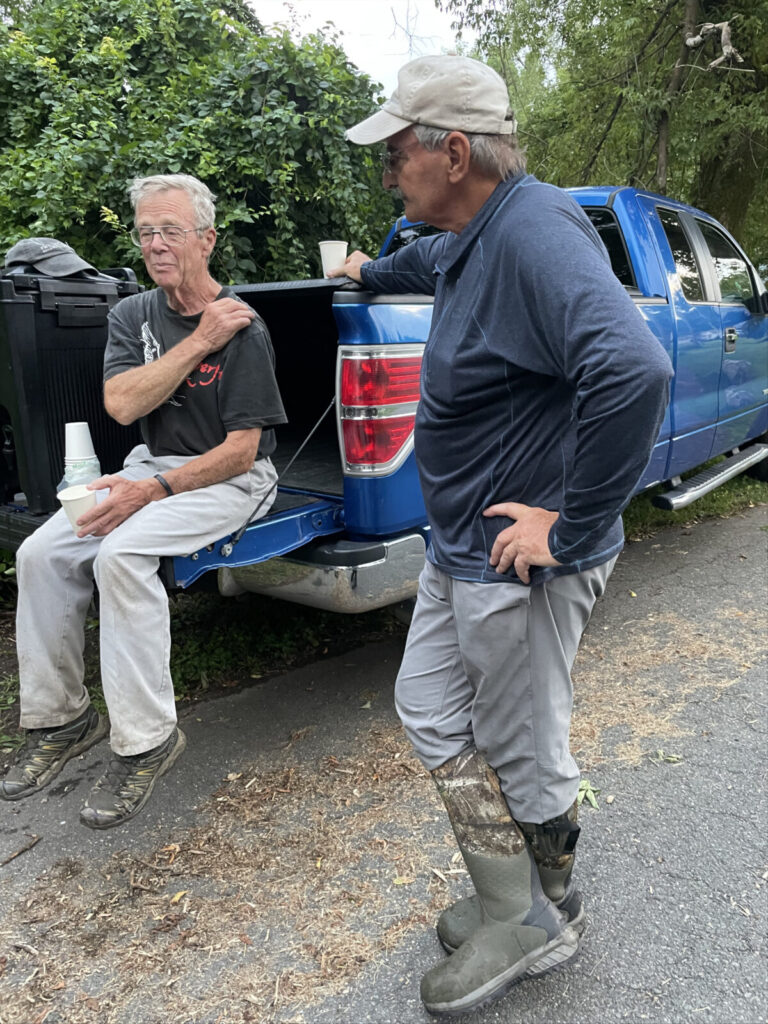


Rosalyn Lincoln and Austin Thompson of Mountain Warrior Conservation will lead Hoosic River Cleanups. Press photo courtesy of the artists

